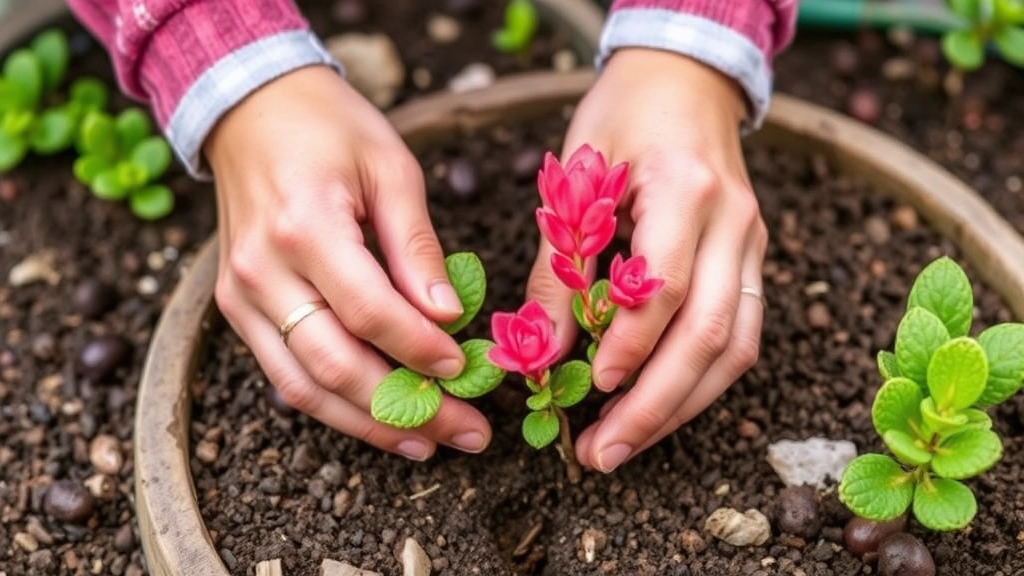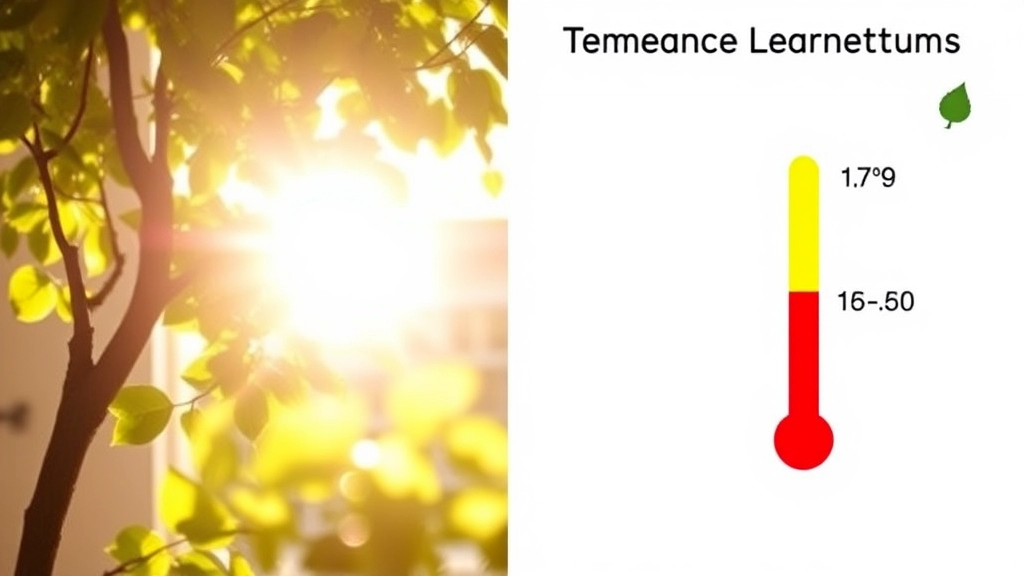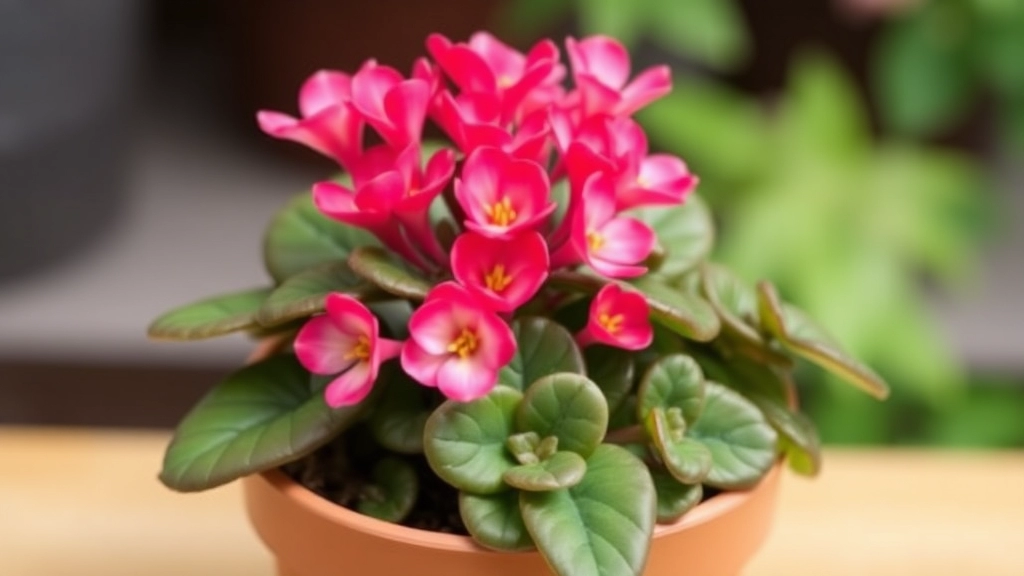Planting Kalanchoe in a Pot
Planting Kalanchoe in a pot is a straightforward process that can bring vibrant blooms to your indoor or outdoor space. Start by choosing the right pot; terracotta, plastic, or ceramic pots with good drainage are ideal. This ensures that excess water can escape, preventing root rot, a common issue with Kalanchoe.
Preparing the Soil
Next, focus on preparing the soil. Kalanchoe thrives in well-draining soil, so a succulent or cactus mix works best. You can also create your own mix by combining regular potting soil with perlite or sand. Proper watering is crucial; water thoroughly but let the soil dry out between waterings to avoid overwatering.
Placement and Care
Place your Kalanchoe in a spot where it can receive plenty of indirect sunlight, and maintain a moderate temperature to keep it healthy and blooming.
Choosing the Right Pot for Kalanchoe
When it comes to growing Kalanchoe, selecting the right pot is crucial for its health and growth. Many plant enthusiasts often wonder: What type of pot is best for my Kalanchoe?
Pot Material
– Terracotta Pots: Excellent for allowing air circulation and moisture control. They help prevent overwatering, which is vital for Kalanchoe.
– Plastic Pots: Lightweight and often come with drainage holes. They retain moisture longer, so ensure you monitor watering closely.
– Ceramic Pots: Aesthetic and sturdy, but check for drainage. They can retain more water than terracotta.
Size Matters
– Diameter: Choose a pot that is about 2-4 inches wider than the Kalanchoe’s root ball. This gives it room to grow without being too spacious, which can lead to overwatering.
– Depth: A pot that is 6-8 inches deep is generally ideal, allowing for adequate root development.
Drainage is Key
– Holes: Always select a pot with drainage holes at the bottom. This prevents water from pooling, which can cause root rot.
– Layering: Consider adding a layer of gravel or small stones at the bottom to enhance drainage.
Aesthetic Considerations
– Style: Choose a pot that complements your home decor. This not only enhances your space but also makes caring for your Kalanchoe more enjoyable.
– Colour: Light-coloured pots reflect sunlight, helping to keep the roots cool, while dark pots absorb heat. Choose based on your environment.
For more detailed care tips, you might find our [ultimate guide to growing and caring for succulent plant Kalanchoe](https://planthq.org/ultimate-guide-to-growing-and-caring-for-succulent-plant-kalanchoe/) helpful. Additionally, if you’re interested in specific varieties, check out our [top Kalanchoe succulent varieties and care tips](https://planthq.org/top-kalanchoe-succulent-varieties-and-care-tips/).
Preparing the Soil for Planting Kalanchoe

So, you’ve picked out the perfect pot for your Kalanchoe. Now, let’s talk about soil.
What type of soil should you use?
Kalanchoe thrives in well-draining soil. You want to avoid anything too heavy that retains moisture, as these plants are prone to root rot.
Here’s what you need for optimal soil preparation:
- Cactus Mix: This is a great base. It’s designed for drainage and allows air to reach the roots.
- Perlite or Pumice: Mix in some of these materials to improve drainage and aeration. About 30% should do the trick.
- Organic Matter: A bit of compost can provide nutrients without making the soil too dense.
Steps to Prepare Your Soil:
- Choose Your Base: Start with a cactus or succulent mix.
- Add Perlite or Pumice: Mix in about 30% of either to enhance drainage.
- Incorporate Organic Matter: A handful of compost will help keep your plant healthy.
- Mix Well: Blend everything together until it’s evenly distributed.
Once your soil is ready, you’re on your way to setting up your Kalanchoe for success.
Proper Watering Techniques
Have you ever wondered why your Kalanchoe isn’t thriving despite your best efforts? One common issue could be improper watering techniques.
Understanding Kalanchoe’s Water Needs
Kalanchoe plants are succulents, which means they store water in their leaves. This unique trait allows them to thrive in arid conditions, but it also means they can be sensitive to overwatering.
- Water Sparingly: Allow the top inch of soil to dry out before watering again.
- Check the Drainage: Ensure your pot has drainage holes to prevent water from pooling at the bottom.
- Watering Frequency: Generally, water every 2-3 weeks during the growing season and reduce frequency in winter.
Signs of Overwatering and Underwatering
Recognising the signs of improper watering can save your Kalanchoe from stress:
- Overwatering: Yellowing leaves, mushy stems, and a foul smell from the soil.
- Underwatering: Wrinkled leaves and a drooping appearance.
Best Practices for Watering
To ensure your Kalanchoe receives the right amount of moisture, consider these best practices:
- Use Room Temperature Water: Cold water can shock the plant.
- Water in the Morning: This allows excess moisture to evaporate throughout the day.
- Use a Moisture Meter: If unsure, a moisture meter can help gauge the soil’s wetness.
By following these guidelines, you can foster a healthy environment for your Kalanchoe to flourish. For more detailed care tips, check out our ultimate guide to Kalanchoe care. Additionally, if you are interested in learning about different varieties, visit our top Kalanchoe succulent varieties and care tips.
Ideal Light and Temperature Conditions

When it comes to nurturing your Kalanchoe, understanding its light and temperature preferences is crucial for its thriving growth.
Light Requirements:
Kalanchoe plants flourish in bright, indirect sunlight.
- Direct Sunlight: While Kalanchoe can tolerate some direct sun, prolonged exposure can scorch its leaves.
- Filtered Light: A spot near a window with sheer curtains is ideal, allowing light to filter through without overwhelming the plant.
- Artificial Lighting: If natural light is limited, consider using grow lights to supplement its needs.
Temperature Preferences:
Kalanchoe thrives in warm conditions.
- Optimal Range: Aim for temperatures between 20°C to 24°C (68°F to 75°F) during the day.
- Nighttime Temperatures: At night, temperatures can drop slightly, but avoid anything below 10°C (50°F).
- Avoid Drafts: Keep your plant away from cold drafts or sudden temperature changes, which can stress it.
Pruning and Maintenance Tips for Healthy Growth
As we move from understanding the basics of Kalanchoe care, let’s delve into the essential practices of pruning and maintenance that ensure your plant thrives.
Why Prune Your Kalanchoe?
Pruning is crucial for maintaining the health and aesthetic appeal of your Kalanchoe. It encourages new growth, prevents disease, and keeps the plant looking its best.
Tips for Pruning Kalanchoe:
- Timing is Key: The best time to prune is right after the blooming period. This allows the plant to focus its energy on new growth.
- Use Clean Tools: Always use sterilised scissors or pruning shears. This reduces the risk of infection.
- Remove Dead or Dying Leaves: Snip away any yellowing or wilting leaves. This helps the plant conserve energy.
- Shape the Plant: Trim back any leggy stems to encourage a fuller growth habit. Aim for a balanced look.
- Pinch Off Flowers: If your Kalanchoe has finished blooming, consider pinching off spent flowers to promote further blooming in the future.
Maintenance Practices for Healthy Growth:
In addition to pruning, regular maintenance is vital for the overall health of your Kalanchoe.
- Check for Pests: Keep an eye out for common pests like mealybugs and aphids. Early detection is key.
- Fertilisation: Feed your Kalanchoe with a balanced fertiliser during the growing season (spring and summer) to boost its vitality.
- Repotting: Every couple of years, consider repotting your plant into fresh soil to avoid root-bound conditions.
- Monitor Soil Moisture: Ensure the soil dries out between waterings. Overwatering can lead to root rot. For best practices, refer to our watering guide.
FAQs on How To Plant Kalanchoe In A Pot
What type of soil is best for Kalanchoe?
Kalanchoe thrives in well-draining soil. Using a cactus mix as a base, supplemented with perlite or pumice for improved drainage and aeration, is ideal. Adding a bit of organic matter like compost can provide necessary nutrients.
How should I prepare the soil for planting Kalanchoe?
Follow these steps to prepare the soil:
- Choose Your Base: Start with a cactus or succulent mix.
- Add Perlite or Pumice: Incorporate about 30% to enhance drainage.
- Incorporate Organic Matter: Add a handful of compost for nutrients.
- Mix Well: Blend everything together until evenly distributed.
What light conditions are ideal for Kalanchoe?
Kalanchoe plants flourish in bright, indirect sunlight. While they can tolerate some direct sun, prolonged exposure may scorch the leaves. A spot near a window with sheer curtains is perfect. If natural light is limited, consider using grow lights to supplement.
What temperature range is best for Kalanchoe?
Kalanchoe thrives in warm conditions. Aim for temperatures between 20°C to 24°C (68°F to 75°F) during the day. At night, temperatures can drop slightly, but avoid anything below 10°C (50°F). Also, keep the plant away from cold drafts or sudden temperature changes.
Can I use regular potting soil for Kalanchoe?
Regular potting soil is not recommended as it tends to retain too much moisture, which can lead to root rot. It is better to use a well-draining cactus mix combined with perlite or pumice.
How often should I water my Kalanchoe?
Water your Kalanchoe sparingly. Allow the soil to dry out completely between waterings. Overwatering can cause root rot.
Can Kalanchoe be grown indoors?
Yes, Kalanchoe can be grown indoors. Ensure it receives bright, indirect sunlight and is kept in a warm environment with stable temperatures.
References
-
How to Grow Kalanchoe Indoors – The Spruce
-
Kalanchoe Care: Growing and Caring for Kalanchoe Plants – Gardening Know How
-
Kalanchoe Plant Care – Better Homes & Gardens
